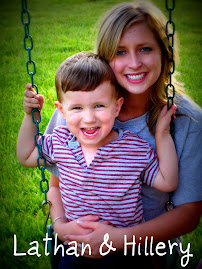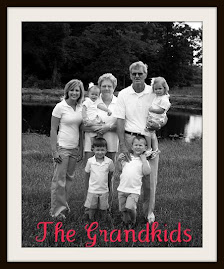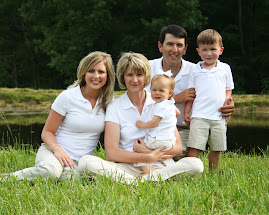Hillery Casey
Terry Elliott
English 300-006
April 30, 2008
Autism: Is there a treatment?
What if before the age of three your child was diagnosis with a disorder? What would you do? What it you knew that there was no cure for this disorder? Well approximately 24,000 children are diagnosis with a disorder called autism every year. (Schoenstadt)
Autism is the pervasive developmental disorder characterized by severe deficits in social interaction and communication, by an extremely limited range of activities and interests, and often by the presence of repetitive, stereotyped behaviors. The first signs of autism begin typically before age three. Although treatment has greatly improved over the past few decades, autism can’t be cured, and continues throughout life. It can range in severity from mild cases where people can live on their own to severe forms where they require social and medical support their entire life. Three to six of every 1,000 children have autism. The disorder occurs three to four times more often in boys than in girls.
A few possible causes of autism are through physical traits, such as, genetics, infection, and traumatic factors. Women who get viral infections during the first trimester of pregnancy have been known to cause autism and children with Fragile X syndrome and tuberous sclerosis are known to have a greater risk also. But no one knows for sure what causes autism.
Signs and symptoms of autism include, children with autism usually have problems with three main areas of development social skills, language, and behavior. Children with the most severe cases of autism have complete inability of communication or interaction with other people.
Some problems in the area of social skills could be that they fail to respond to his or her name, has poor eye contact, appears not to hear you at times, resists cuddling and holding, appears unaware of others’ feelings, and seems to prefer to play alone.
Language problems consists of starting to talk later than other children, loses previously acquired ability to say words or sentences, does not make eye conduct when making requests, speaks with an abnormal tone or rhythm such as a singsong voice or robot-like speech, can not start a conversation or keep one going, and may repeat words or phases verbatim, but doesn’t understand how to use them.
Some signs of behavioral problems are they perform repetitive movements such as rocking, spinning, or hand-flapping, develops specific routines or rituals, becomes disturbed at the slightest change in routines or rituals, moves constantly, may be fascinated by parts or objects, such as the spinning wheels of a toy car, and may be unusually sensitive to light, sound, or touch.
There was a survey done in
I believe that behavioral therapy is the best way to treat autistic children right now, even though there is not a specific treatment that fits every autistic child. But, what is the best treatment for autism even though there is not a cure? Is there a specific one or could there be many?
Due to the high rate of success behavioral therapy is becoming a very popular way to treat autism. Behavioral therapy puts emphasis on good behavior and allows the child to be rewarded for it, therefore they will be motivated to continue with the good behavior and it quickly lets the child know what behavior is inappropriate and it will not be encouraged. Within the behavioral therapy program there are four sections, a structured daily routine, behavioral control, communication, and applied behavior analysis. Children with autism will often use extreme behavior, such as, throwing a temper tantrum, self injurious behavior, aggression, and agitation. A structured daily routine is very important for an autistic child because autistic children do not respond well to changes and with a daily routine it gives them an idea of what to except for the day.
Next, is behavioral control, parents must be able to handle their child when they have these temper tantrums. But you must keep three things in mind when dealing with an autistic child. You must deal with the behaviors that may be dangerous to the child or to someone else first. You must use firm words and actions when doing this and try not to show any anger. Next, you need to teach your child how to sit down because this is sometimes difficult for them to do on their own. The best way to do this is to reward them for sitting down. Last, many autistic children have weird and repetitive behaviors, such as, rocking and finger flapping. Many of these behaviors will make you want to tell them to “stop”, but you must not do that. Instead, give them something else to do that will get them away from that distracting behavior.
Third section is communication. It is very important to talk to your children using short and clear sentences and this can be in a direct and simple way. Doing this will help you insure them and will not be confusing.
The last section of behavioral therapy is applied behavior analysis or
These sections of behavioral therapy will not cure a child from autism, but will help them to cope with the disorder. (Autism- Symptoms, Treatment and Prevention)
A couple other treatments for autism other than behavioral or communication therapy are drug therapies and complementary approaches. Drug therapies use things such as stimulants to help with hyperactivity and antipsychotic drugs will sometimes help with repetitive and aggressive behaviors. However, there is not a medication that will help with the direct signs of autism. Complementary approaches uses things like art therapy, music therapy, special diets, vitamin and mineral supplements and sensory integration. Therapies such as these focus on reducing a child’s hypersensitivity to touch or sound. (MayoClinic.com)
Communication disorders majors’ deals with training students in the knowledge and skills underlying communication sciences and disorders. This can be in varied settings from a school to a hospital to a nursing home. In each setting you will deal with people who have a disorder such as autism or someone who has had a stroke or even someone who is having to be taught how the speak again. (Department of Communication Disorders)
Works Cited
"Autism: Signs and Symptoms." MayoClinic.Com. 2 June 2006. 23 Mar. 2008
"Autism- Symptoms, Treatment, and Prevention." 20 Mar. 2008
"Autism: Treatment." MayoClinic.Com. 2 June 2006. 11 Apr. 2008
"Autism." Dictionary.Com. 23 Mar. 2008
"Autism." MayoClinic.Com. 2 June 2006. 23 Mar. 2008
"Department of Communication Disorders."
Howlin, Patricia, and Anna Moorf, comps. Diagnosis in Autism: a Survey of Over 1200 Patients in the
Kelly Autism Program.
Leong, Sandra K. "Behavioral Therapy for Autism: an Overview." 23 Mar. 2008





1 comment:
"Women who get viral infections during the first trimester of pregnancy have been known to cause autism and children with Fragile X syndrome"
A viral infection has nothing to do with fragile x syndrome. Fragile X syndrome is due to a "fragile" x chromosome. It is genetic. For accurate information please see www.nfxf.org or my website http://fragilex.wordpress.com
Post a Comment